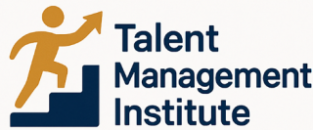
Understanding People Leadership
Decoding the Essentials of Leading People
Understanding how to effectively lead people is fundamental to business success. In this highly competitive era, organizations seek leaders who can navigate the complex web of human dynamics with finesse. The core of people leadership lies in recognizing the potential of both teams and individual employees, fostering an environment where skills and talent are nurtured for long-term growth. This involves not just overseeing tasks but also inspiring team members to exceed their own expectations.
Critical to this leadership style is the ability to adapt one's approach to varying situations and diverse team compositions. Effective leaders often embody a fluid leadership style, one that morphs according to the needs of their team. Whether they need to be more authoritative during a pivotal task or more participatory in a brainstorming session, these leaders drive organizational success by flexibly aligning their actions with their strategic foresight.
An often-overlooked aspect of leading people is emotional intelligence which rests at the heart of empathetic leadership. This key skill allows leaders to create a supportive and positive work environment, driving innovation and commitment across teams.
In the quest for proficient people leadership, it's essential for leaders to focus on building trust and empowering their employees. Empowerment involves giving team members the confidence to take initiative, make decisions, and contribute effectively to the organization's goals. This is a crucial component for fostering a culture oriented towards sustained success.
For further insights into what makes a manager truly effective, be sure to explore this resource on key managerial qualities. Gaining a deep understanding of these qualities can significantly enhance the journey from being a manager to becoming a high-performing people leader.
The Role of Emotional Intelligence
Emotional Intelligence: The Heart of Effective Leadership
In the realm of people leadership, emotional intelligence (EI) stands as a cornerstone for effective leaders. It's not just about managing tasks or driving business outcomes; it's about understanding and connecting with team members on a deeper level. Emotional intelligence involves the ability to recognize and manage one's own emotions, as well as the emotions of others. This skill is crucial for leaders aiming to foster a positive work environment and build a culture of trust.
Leaders with high emotional intelligence are adept at navigating the complexities of human interactions. They can read the room, sense the mood of their team, and adjust their leadership style accordingly. This adaptability is key in leading people through change and ensuring long-term organizational success.
Key Components of Emotional Intelligence
- Self-awareness: Understanding your own emotions and how they affect your thoughts and behavior.
- Self-regulation: The ability to control or redirect disruptive emotions and impulses.
- Motivation: A passion for work that goes beyond money and status, driving leaders to pursue goals with energy and persistence.
- Empathy: Considering others' feelings, especially when making decisions.
- Social skills: Managing relationships to move people in desired directions.
Developing emotional intelligence is not just a personal growth development task; it's a strategic move for leaders aiming to create high-performing teams. By honing these skills, leaders can empower employees, fostering an environment where innovation and success thrive.
For more insights on how emotional intelligence plays a pivotal role in leadership, explore The Art of Global Leadership in Talent Management.
Building a Culture of Trust
Fostering Trust in Leadership
In any organization, the foundation of effective people leadership is the cultivation of a trusting environment. To build a culture where employees feel valued and secure, leaders must prioritize transparency, communication, and mutual respect. This commitment to trust is not simply a moral obligation but a strategic element for organizational success. Trust within teams is pivotal to achieving long-term success. It facilitates communication, encourages innovation, and empowers team members to take initiative with confidence. A trusted work environment can significantly enhance the performance of employees and create a sense of belonging, thereby promoting an employee's commitment to the organization's goals and objectives. Leaders who excel in building trust demonstrate emotional intelligence by actively listening to their team members and acknowledging their concerns. By doing so, they create an inclusive work environment that is conducive to growth and development. Moreover, effective leaders are open and honest about the challenges faced by the organization, which further solidifies the trust between them and their teams. This transparency is crucial, especially when navigating change and uncertainty. To develop a culture of trust, leaders should also focus on consistency and reliability. This involves delivering on promises, being accountable for their actions, and maintaining a clear and consistent leadership style. By doing so, leaders set a standard for their teams, inspiring them to mirror these qualities in their own work. By fostering trust, people leaders can empower their teams to reach their full potential. This trust-based leadership not only enhances individual and team performance but also drives the organization's long-term success. For further insights on career opportunities that emphasize cultivating trust and other essential leadership qualities, explore this blog post.Empowering Employees for Success
Fostering Employee Empowerment
Empowering employees is a cornerstone of effective leadership. It involves more than just delegating tasks; it’s about creating an environment where team members feel valued and motivated to contribute to the organization’s success. This empowerment is crucial for fostering innovation and achieving long-term business goals.
Successful leaders understand that empowerment begins with trust. By building a culture of trust, leaders can encourage employees to take initiative and make decisions that align with the company’s vision. This trust is not just given; it is earned through consistent, transparent communication and by demonstrating emotional intelligence in everyday interactions.
Encouraging Skill Development
Leaders who prioritize growth development are more likely to see high-performing teams. By investing in leadership development programs and offering opportunities for skill enhancement, leaders can ensure that their team members are equipped to handle complex tasks and adapt to changing work environments. This investment in skills not only benefits the employees but also contributes to the overall organizational success.
Moreover, effective people leaders recognize the importance of tailoring their leadership style to meet the diverse needs of their team. By understanding individual strengths and areas for improvement, leaders can provide personalized support that encourages both personal and professional growth.
Promoting a Collaborative Work Environment
Creating a collaborative work environment is essential for empowering employees. Leaders should encourage open dialogue and thought leadership among team members, fostering a culture where ideas are freely exchanged and innovation is celebrated. This collaborative approach not only enhances team dynamics but also leads to more effective problem-solving and decision-making processes.
In conclusion, empowering employees is a multifaceted process that requires a commitment to building trust, encouraging skill development, and promoting collaboration. By focusing on these areas, leaders can create a work environment that not only supports individual success but also drives the organization towards achieving its long-term objectives.
Navigating Change with Confidence
Embracing Change for Organizational Success
Navigating change with confidence is an indispensable skill for effective people leaders. In the ever-evolving business landscape, adaptability is crucial as teams face new challenges and opportunities. Change management involves guiding team members and employees through transitions, ensuring that both short-term tasks and long-term goals are achieved. One key aspect of handling change is emotional intelligence. By understanding the emotions and thoughts of employees, leaders can anticipate obstacles and address concerns, creating a supportive work environment conducive to growth and development. This approach enables teams to transition smoothly, maintaining high performance and driving innovation. Incorporating a culture-oriented leadership style is essential for handling change. People leadership hinges on fostering a trusting environment where team members feel empowered to contribute to organizational success. This trust encourages open communication and resilience, allowing the team to thrive amidst uncertainty. Leaders must harness their skills to align team members' efforts with organizational goals. By doing so, they can effectively communicate the vision for change and its benefits. Encouraging employee involvement in the change process not only enhances engagement but also develops their leadership skills, setting the stage for future success. To successfully lead people through change, leaders must remain confident and committed to the team's collective success. Emphasizing continuous learning and development will ensure a team that can adapt and excel, ultimately fostering a culture of long-term organizational success.Measuring Leadership Effectiveness
Evaluating the Impact of Leadership
For any leader aiming for long-term organizational success, evaluating leadership effectiveness is crucial. Effective people leadership demands a deep understanding of how leadership styles and emotional intelligence contribute to a team's performance. To measure leadership success thoroughly, it's vital to take a holistic view of the elements that impact both individual and team growth.
One approach to assessing leadership effectiveness is through a combination of quantitative and qualitative metrics. Quantitative metrics might include assessing the completion of tasks and meeting business-oriented goals. However, strong leaders also focus on more qualitative factors, such as positive cultural shifts and enhanced employee engagement.
Feedback mechanisms play a pivotal role in this evaluative process. Constructive feedback from team members, peers, and supervisors can illuminate areas for leadership development. Encouraging open communication and fostering a work environment where team members feel valued contributes enormously to recognizing leadership strengths and areas for improvement.
High-performing teams often reflect their leaders' abilities to inspire innovation and empower employees. Observing team dynamics can reveal how effectively a leader inspires thought leadership and nurtures the potential of team members. A supportive people leader promotes individual contributions while steering the collective toward shared goals.
Assessing the long-term impact of people leadership involves looking beyond immediate business outcomes. Evaluating whether a leader has fostered an environment conducive to growth and development is essential. Moreover, how a leader navigates change and supports their team through transitions speaks volumes about their leadership prowess.
In the ever-evolving landscape of work, leaders must remain adaptable, continuously refining their leadership skills to meet new challenges head-on. By keeping track of leadership effectiveness, organizations ensure that their leaders are not just steering the team for immediate success but also paving the way for future achievements.













